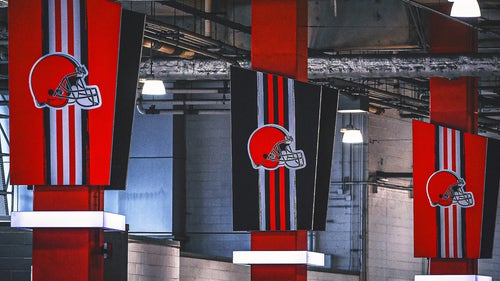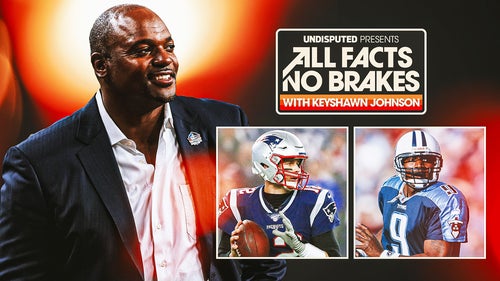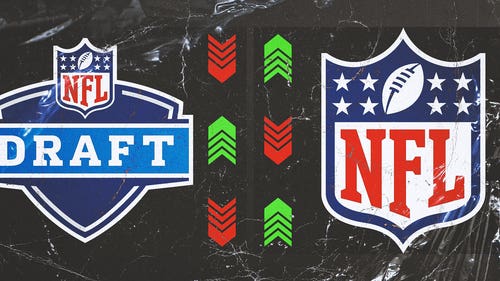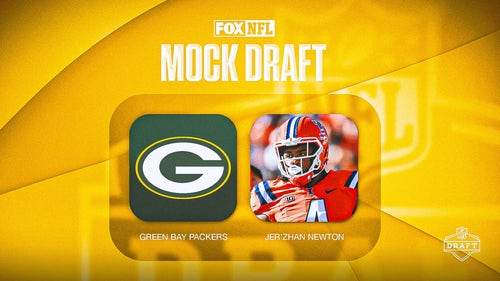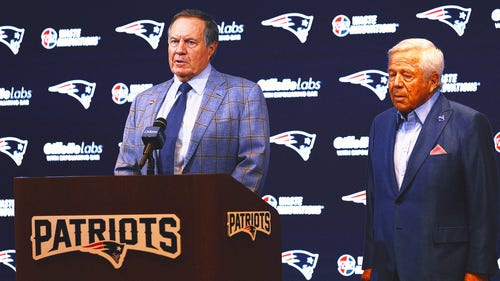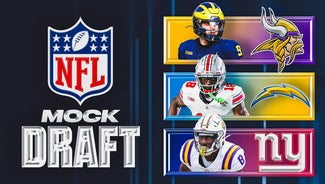
Crucial calls on Championship Sunday
Championship Sunday ended up being, well, just Super.
Two great games, decided by a total of six points, have left us with a rematch of Super Bowl XLII — the New York Giants again taking on the New England Patriots. But not before a couple of crucial fourth-quarter plays — one in which a player held on to the ball just long enough, and the other in which a player didn't hold on to it long enough — helped determine the outcome of both the NFC and AFC championship games.
The Giants earned their trip to Super Bowl XLVI with a 20-17 overtime win vs. the San Francisco 49ers, while the Patriots punched their ticket to the rematch with a 23-20 victory over the Baltimore Ravens.
Let's take a look at those two key plays, starting with the NFC. Here was the situation:
New York had the ball, second-and-21 at the Giants' 15-yard line with 2:32 left in regulation. The score was tied 17-17.
Giants quarterback Eli Manning completed a six-yard pass to Ahmad Bradshaw, who was stopped by the Niners' Tramaine Brock and NaVorro Bowman. Bowman stripped the ball out of Bradshaw's hands, and it was recovered by the 49ers, but the officials ruled that Bradshaw's forward progress had been stopped.
San Francisco could not challenge the ruling as this was a play that is not reviewable. The only time you can challenge a ruling of forward progress is if it involves a first down or a score. A forward progress ruling prior to a fumble is not reviewable, period. However, let's assume for a moment that it was. It wouldn't have been reversed to a fumble on this play because Brock was pulling Bradshaw backward before Bowman pulled the ball out of his hands. So the right call was definitely made on the field.
At the AFC title game in Foxborough, here was situation on the other key play:
Baltimore had the ball, second-and-1 from the New England 14-yard line with 27 seconds left in the game. The Patriots led 23-20.
Ravens quarterback Joe Flacco attempted a 14-yard pass to Lee Evans in the corner of the end zone that was broken up by Sterling Moore.
It was clearly not a catch as the ball was coming out before Evans' second foot was on the ground. Besides that, even if both of Evans' feet were on the ground, you have to maintain control long enough to perform an act common to the game of football. A lot of my Twitter followers questioned why the call was reviewed, but there was no need to review it because on this play, it wasn't close to being a catch.
Sometimes, slow motion distorts the real view. Look at this play again in real time, and you'll see the ball is out immediately when the second foot touches the ground. That's not a catch, folks.
Here were the other interesting calls from Sunday.
NFC CHAMPIONSHIP / GIANTS AT 49ERS
THE SITUATION: San Francisco had the ball, second-and-10 from the 49ers' 27-yard line with 7:21 left in the first quarter. There was no score.
THE PLAY: 49ers quarterback Alex Smith completed a 73-yard pass to Vernon Davis. The replay official initiated a scoring review of the player out of bounds ruling, and the ruling on the field stood as called. Davis was called for unsportsmanlike conduct for a celebration.
MY TAKE: Boy, was that close. How in the world Davis kept his heel off the ground is unbelievable. Replay official Al Hynes was absolutely right to initiate a review, and referee Ed Hochuli's decision to stay with the ruling was also the right call. It looked pretty clear that Davis' toe was in bounds and that the heel did not come down on the line.
THE SITUATION: New York had the ball, fourth-and-15 from the Giants' 15-yard line with 11:17 remaining in the fourth quarter. The 49ers led 14-10.
THE PLAY: Steve Weatherford punted the ball 56 yards, and the 49ers' Kyle Williams let the ball bounce past him. But the Giants' Devin Thomas picked up the ball, claiming the ball hit Williams. The ruling on the field was that Thomas had downed the ball. The Giants challenged the kick touch ruling, and the play was reversed.
MY TAKE: I hate to blow our own horn, but FOX had great super-slow-motion shots of the ball deflecting off of Williams' knee. I really believe that Williams didn't feel like the ball had touched him. But the video was clear that the ball changed direction after it hit Williams' knee. Touching of a kick is always reviewable, and in this case, the Giants were awarded the ball at the spot of the recovery. Even though Williams touched the ball, it still remains a kick, and the kicking team can recover the ball, but not advance it.
AFC CHAMPIONSHIP / BALTIMORE AT NEW ENGLAND
THE SITUATION: New England had the ball, third-and-10 at the Baltimore 17-yard line with 3:11 left in the second quarter. The score was tied 10-10.
THE PLAY: Patriots quarterback Tom Brady attempted a 12-yard pass to Rob Gronkowski that was ruled out of bounds by the officials.
MY TAKE: Sometimes you have to make a quick decision as a coach. If I were New England coach Bill Belichick, the last replay would have been enough for me to initiate a challenge, especially since a completed catch would have given the Patriots a first down. The question was when Gronkowski got control of the ball. It appeared to me that, when he did, his right toe was still on the ground. His left foot clearly came down in bounds. It was really close — and they may have stayed with the call on the field — but if it were me under the hood, I would have reversed it.
THE SITUATION: Baltimore had the ball, third-and-4 from the New England 29-yard line with 3:48 left in the third quarter. The Patriots led 16-10.
THE PLAY: Ravens quarterback Joe Flacco completed a 29-yard pass to Torrey Smith for a touchdown. The replay assistant initiated a challenge to the runner was in bounds ruling, and the play was upheld.
MY TAKE: It was right to uphold the call that was made on the field. The camera shot from the inside made it look like Smith's heel was out of bounds. The camera shot from the outside made it look like he was in bounds. That alone is enough to let the ruling on the field stand. What it might suggest is that at some point, the NFL and/or the networks work to always have camera shots directly down both sidelines, the end lines and the goal line.







































































































































